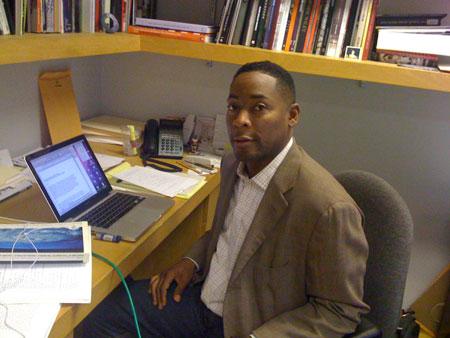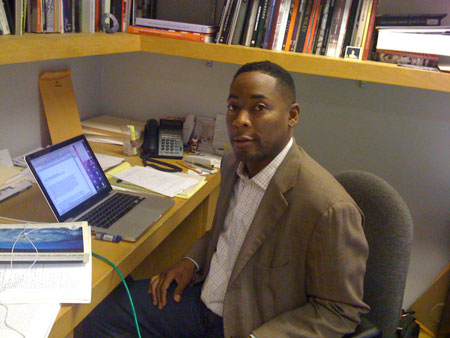Franklin Sirmans hasn’t wasted any time settling into his new post as head of contemporary art at LACMA. He’s been visiting studios, galleries, and private collections around town, getting to know the works of art in our permanent collection, and planning upcoming exhibitions. Before coming to LACMA, Franklin served as curator of modern and contemporary art at the Menil Collection in Houston, and worked as an independent curator, critic, writer, and editor. Now that he’s been here for a few months, I checked in to see how he was adjusting to his new surroundings.
What brought you to LA?
It was the opportunity to work with the team assembled here—including director Michael Govan, and my colleagues throughout the museum—at a really exciting time. Also, right now, the art conversation in Los Angeles is so interesting. Art in Los Angeles is still so young. We’re looking back to the grand old past of, what? The 1950s and 60s. We are still in the midst of a conversation about the formation of the art scene in Los Angeles with the people who were here then and are still here now—Ed Ruscha, Joe Goode, Betye Saar, Samella Lewis, just to name a few. That fascinates me.
What are you finding out about Los Angeles?
I’m still checking out the neighborhoods, seeing new places. I went to see Judson Powell in Compton the other day to talk about his work at the Watts Towers in the past and his present work there, building an arts and cultural center.
I feel like I know the Culver City scene but I know that’s very little in the scope of things. That said, Lauri Firstenberg at Laxart, Suzanne Vielmetter Projects, and Roberts & Tilton are always interesting.
I‘ve done studio visits with Betye Saar, who has a wonderful piece in the collection, and Paul McCarthy, also in the collection. I recently did a visit with the curator Samella Lewis, whose work I grew up reading.
I knew a lot of artists before coming here. But I didn’t know the collectors and collections in Los Angeles, so I’m trying to get to know them now, as well as artists. I’m also really interested in what’s happening outside the confines of visual art—what people are doing in film, dance, and music, and the vernacular of the city.
What else, besides art?
I watch a lot of soccer.
What do you miss about Houston and the Menil Collection?
The atmosphere there is so serene. You have the Byzantine Fresco Chapel across the street from the Mark Rothko Chapel. Right there, you also have Barnett Newman’s Broken Obelisk and down the street you have the Menil Collection and behind that you have Cy Twombly’s gallery and behind that you have Dan Flavin’s gallery. It’s like a perfect art experience.
But in a lot of ways, that’s what’s happening here at LACMA, right now.
What’s it like getting to know the collection here?
I’m interested in exploring the synergy between the Broad collection and the LACMA collection, and we’re doing that already in some new installations this fall.
The modern collection here includes some really special pieces—the Giacomettis, for example. The Picassos, those Brancusi birds.
There are some wonderful works I would like to see installed—a Marlene Dumas painting that’s been out on loan for a while, a work by John Outterbridge that I really want to see, and Toba Khedoori, a young artist who interests me. We have a wonderful piece of hers in the collection. It’s huge—I’d really love to see that on view. Not easy to do.
I want to play on the strengths of the collection, those special objects that we have at hand, and also the relationship we have with artists here in Los Angeles, which is something that will play a prominent role in a future exhibition. More news on that shortly.
I want to look at contemporary art in the context of the encyclopedic museum. That was part of the hook, the reason I came here. How, as contemporary viewers, do we look at the art of the past? How can artists help us see the past anew?




